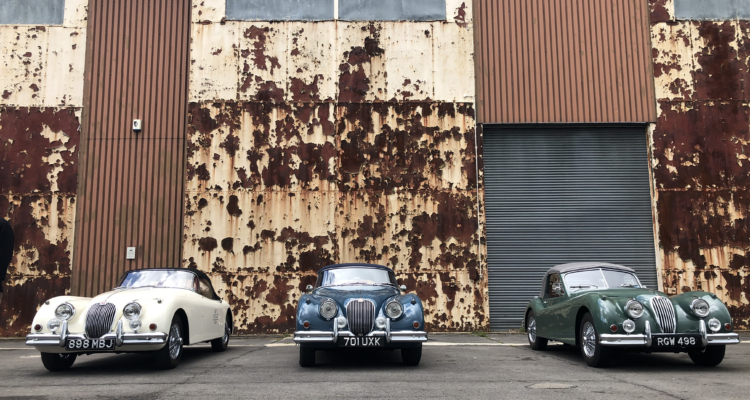Vincent Black Shadow – The Most Desirable Bike in the World?
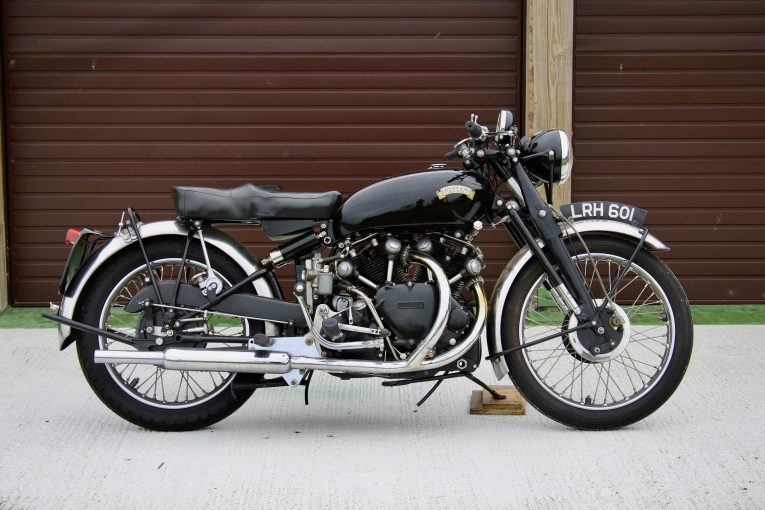
They say that beauty is in the eye of the beholder and that’s as applicable to motoring as it is to art, music or indeed, other people. But few can argue that this Vincent Black Shadow, recently sold in a Car & Classic auction for £75,000 and the highest price so far, is anything but stunning. It’s not only a wonderful creation in its own right, but it has been looked after throughout its life which, if it were human, would have seen it retiring five years ago and spending its time gardening and secretly feeding grandchildren sweets when their parents weren’t looking.
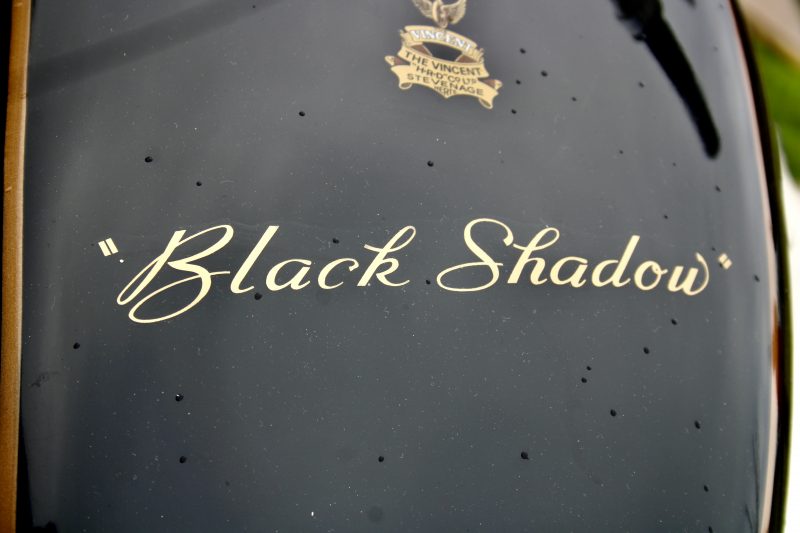
Vincent, as a brand, has a wonderful heritage, conceived during the pioneering years of aviation. Its story began in 1924 when former WW1 Royal Flying Corps pilot, Howard Raymond Davies, formed motorcycle manufacturer HRD Motors. Davies had been shot down in 1917 and was held prisoner until the end of hostilities and during that time, he formulated the basis of the motorcycles he would produce.
While his bikes did well in racing, the company didn’t do so well in business and in 1928, it went into liquidation.
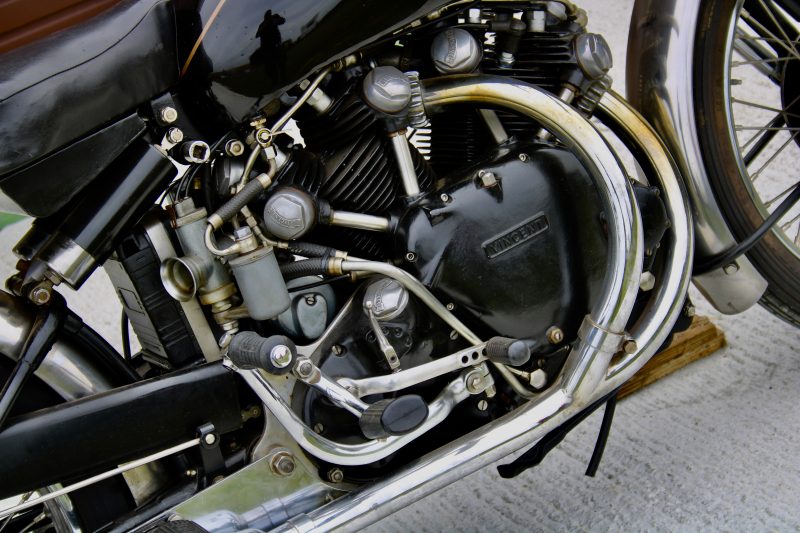
Enter young engineer Phil Vincent, who was looking for a way to start producing his own brand of motorcycles, having already built one and patented a new form of rear suspension. He bought the rights to the HRD name, its designs, jigs and all remaining hardware and formed HRD Vincent, re-locating the company to Stevenage, Hertfordshire.
In 1931, Phil Irving joined HRD Vincent and, along with original HRD engineer EJ Massey, they set about revolutionising motorcycling.
Original models used a variety of engines, from JA Prestwich (JAP) and Villiers with varying (read average to disastrous) degrees of success and it wasn’t long before Irving decided they needed to manufacture their own powerplant. The result was a 499cc single-cylinder motor which was used in the early Meteor and Comet bikes. Then, in 1936, Irving came up with the idea of effectively joining two of these single-cylinder engines together to form a V-twin, giving an improvement in performance.
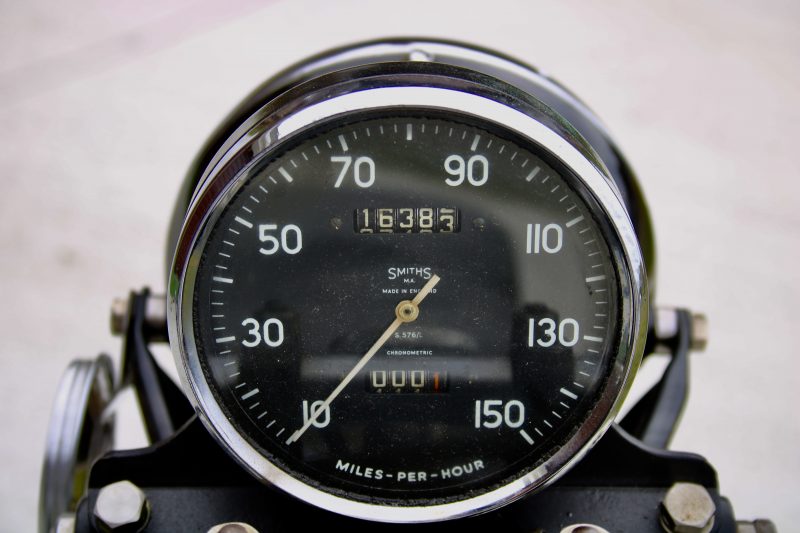
The first bike fitted with the V-twin was the Series-A Rapide that used a host of innovative features, including the cantilever suspension.
With the outbreak of the Second World War, production shifted from motorcycles to munitions, though Vincent engines were also put to use in a variety of applications.
Following the end of the war, production resumed with the introduction of the Series-B Rapide. This was a far more developed motorcycle, with a unit construction (engine and transmission sharing the same casing) which allowed it to become a stressed member and the motorcycle as a whole to be stiffer and lighter.
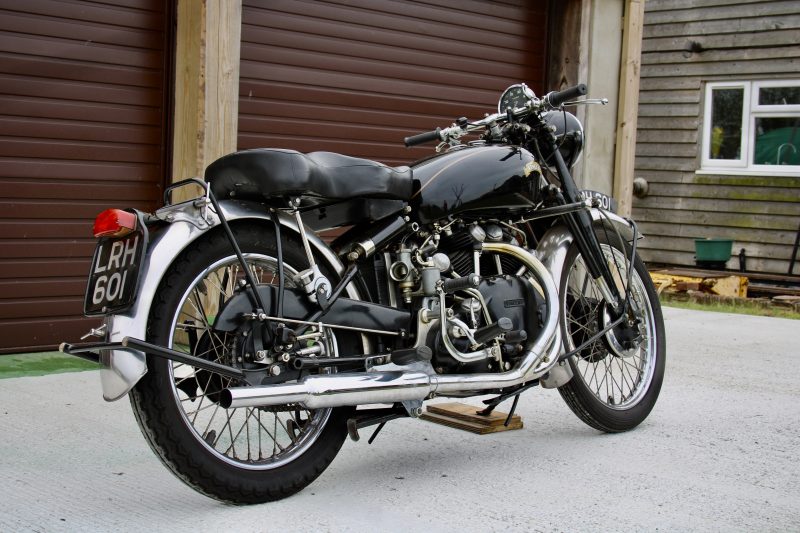
Two years later, the Series-C Rapide was introduced, using Vincent and Irving’s front-suspension girder forks but for the first time, with hydraulic damping. Like the Series B, it was offered in two states of tune; the 45bhp Rapide or the 55bhp Black Shadow. A racing version of the Black Shadow, the Black Lightning, went on to set the land speed record at the Bonneville Salt Flats in 1948 with racer Rollie Free riding, lying on the seat and wearing only swimming trunks.
By this point, bikes were being exported to the USA and to avoid confusion with the domestic Harley-Davison (HD) brand, the HRD was dropped and the bikes were known just as the Vincent. The final version, the Series D, was launched in 1954.
By the mid 1950s, sales were beginning to slow and the company looked to diversify, with three-wheelers and a return to aviation, this time developing the Picador, a version of the 998cc V-twin for aeronautical use. Unfortunately, the airframe the engine was destined for never made it off the ground and in 1955, the company produced its last motorcycle.
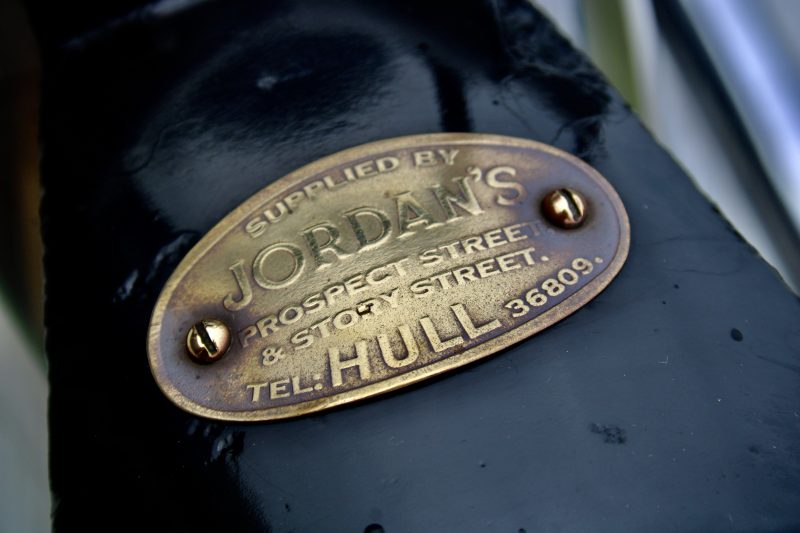
It tried several other ventures but went into liquidation in 1959. The Vincent name continued in the world of motorcycling though, as various engines were used in Norton frames to create the NorVin specials and in 1996, three bike fans developed the RTV range of bikes, using engines based on Irving’s original design. Sadly, this company ceased trading in 1998 but later that year, Bernard Lii, who had acquired the trademark in 1994, launched Vincent Motors USA, to develop and build bikes based around the Honda V-twin engine. Tragically, he was killed in a motorcycle accident and this project ended.
The final time the name was seen was on the Irving Vincent, a modern bike re-engineered from Irving’s design and produced by the Horner brothers – Ken and Barry – in Australia and using the name with the blessing of Irving’s widow, Edith.
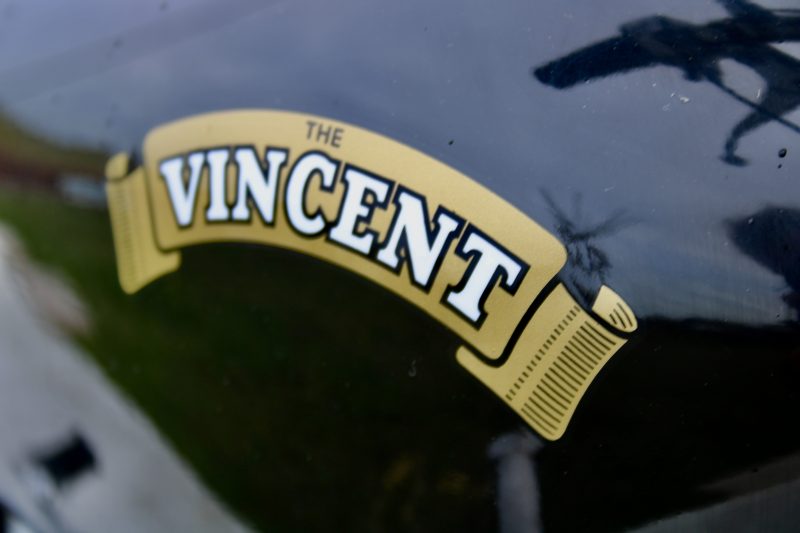
The Vincent Black Shadow
There’s far more to the Black Shadow than simply a higher-performance variant of the Rapide. The company already had ‘The world’s fastest production motorcycle’ with the Rapide, which could hit 110mph but both Phils – Vincent and Irving – felt that increased performance would pave the way for a whole new generation of tuners and racers. However, Vincent MD Frank Walker disagreed, refusing to sanction development, so Irving and George Brown built two bikes in secret.
The new bike was introduced to the press at the Earl’s Court motor show in 1948 and was an instant success. Motor Cycling magazine tested it at 122mph and in 1949, The Motor Cycle gave it 99 out of 100 because; “nothing, it is said, is perfect”. It went on to set the record for the fastest production bike, at 125mph.
The number of bikes has been the subject of some debate but 1774 seems to be the most accepted figure, ensuring a degree of exclusivity for the model. It followed the general developments of the Series B, C and D Rapides but featured black-enamelled cases on its blueprinted engine to distinguish it from the more mundane models in the range.
At a time when British motorcycle engineering was the best in the world, the hand-built Black Shadow was the best of the best and it developed a loyal and passionate fanbase. Many feel it was the first ‘superbike’, blending performance with handling and practicality and, with its combination of black panels and chrome embellishments, it is a stunning machine to look at, as well as ride.
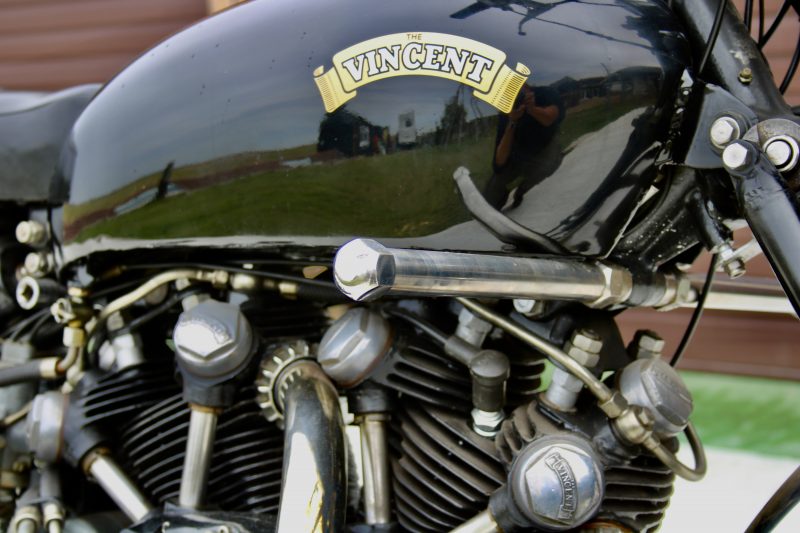
It was stacked full of design features that were way ahead of their time; the rear wheel was reversible and had drive-cogs fixed to either side with a different number of teeth, so that it could be swapped if the bike was being used in mountainous terrain or with a sidecar, for example. The front girder forks were far stiffer than the normal telescopic versions and hydraulic damping gave a surprisingly good ride. The single instrument had a large, circular speedometer that read to 150mph and the bike was adjustable to fit any rider; foot pedals and seat position, for example, could be altered to suit.
Famous Fans
It’s not surprising that the Black Shadow found favour with the great and the good. Hunter S Thompson was a fan, mentioning his bike several times in Fear and Loathing in Las Vegas and renowned car and bike aficionado, Jay Leno, owned ten Vincents at one time.
The Black Shadow was also on the big and the small screen; it made appearances in ITV’s Inspector Morse and the 1965 spoof spy movie, Intelligence Men, starring British comedy legends Eric Morecambe and Ernie Wise. Fully-faired examples were also ridden by the Thought Police in a 1957 adaptation of George Orwell’s 1984 and presenter Richard Hammond rode one in BBC Top Gear’s Race to the North, pitting the then-fastest Bike in the World against the Fastest Car in the World, the Jaguar XK120 and a steam locomotive.
This Example
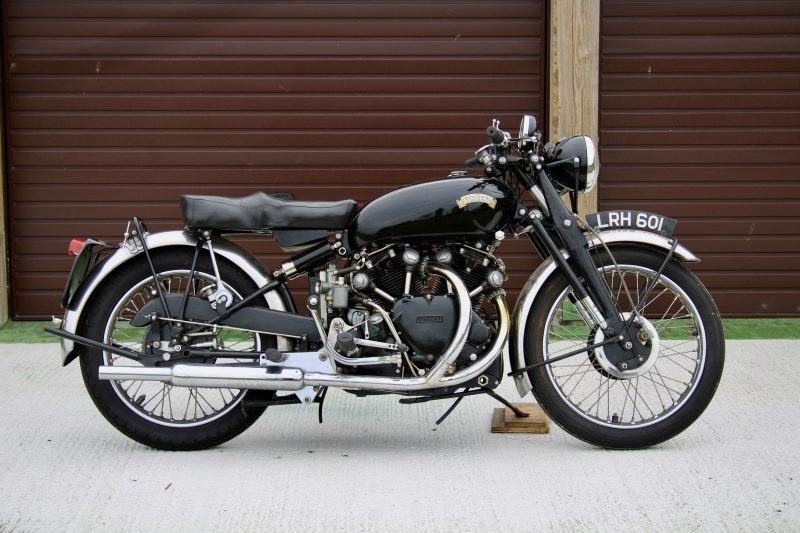
The bike that recently sold on the Car & Classic auction was an excellent example of a Series-C Black Shadow. Sold originally in 1950 by Jordan’s of Hull, one of the north’s most renowned motorcycle dealers, its provenance was confirmed by the esteemed Vincent Owners’ Club (VOC) and was presented with a host of original paperwork, including log books, works order, completion note and a certificate of authenticity from the VOC.
Both cosmetically and mechanically, the bike was in excellent condition. Its paint was delightful and it started and ran perfectly – a testament to not only the care it has experienced over its 70 years but also the quality of the original design and engineering. It rightly wears its ‘Made in England’ markings with great pride.
It was also clearly desirable. The opening bid was significant and increased in large values, until the £75,000 sale price was reached.
So why was this one worth so much?
Something is only worth what someone else will pay for it (unless you’re an insurance underwriter, then it’s worth around 30% of what everyone else thinks) and the fact that this bike achieved £75,000 in the middle of a global pandemic is a clear demonstration of its desirability.
The Black Shadow is a truly iconic motorcycle; it was the fastest production bike in the world at the time – in fact, right up until 1973. It rode as well as it went. It was beautifully engineered with the kind of innovation that made British engineers revered around the world. It was born from the ashes of WW2 by engineers that had helped to win the war for the allies. It was the kind of bike that you could imagine parked on an airfield in Kent, waiting for its Spitfire-pilot owner to return from a sortie and head to the pub on it. There were only 1774 of them made and nine people wanted this one when it came up for auction. However, only one could have it.
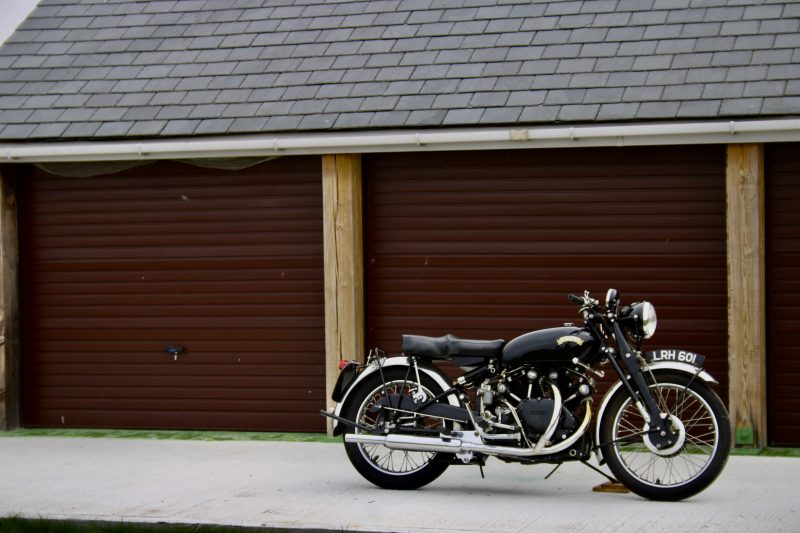
Placing a pre-auction value on a bike like this, with such general as well as specific provenance, is always difficult and verges on impossible. Various auction houses around the world range from US$60,000 to $100,000, depending on condition but arguably, the purest way to determine the value of an object like this is to place it at auction. And while to many, £75,000 is an awful lot of money, both the seller and the new owner can attest that it is an awful lot of motorcycle with an awful lot of heritage.
In fact, to the buyer, it’s a bargain.
